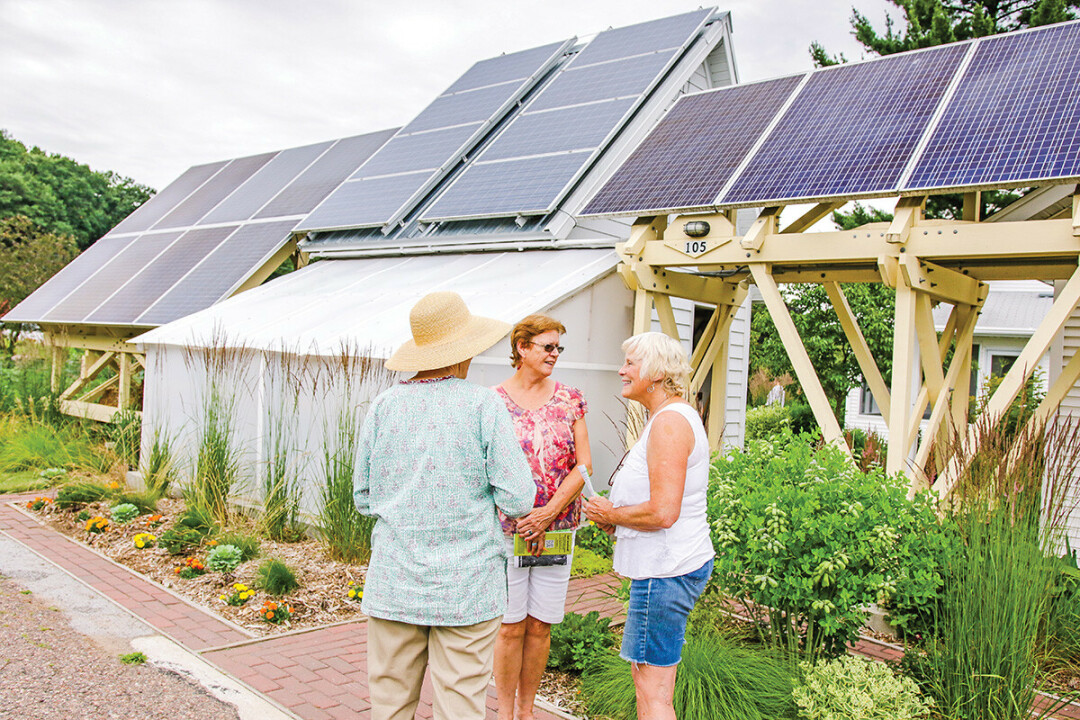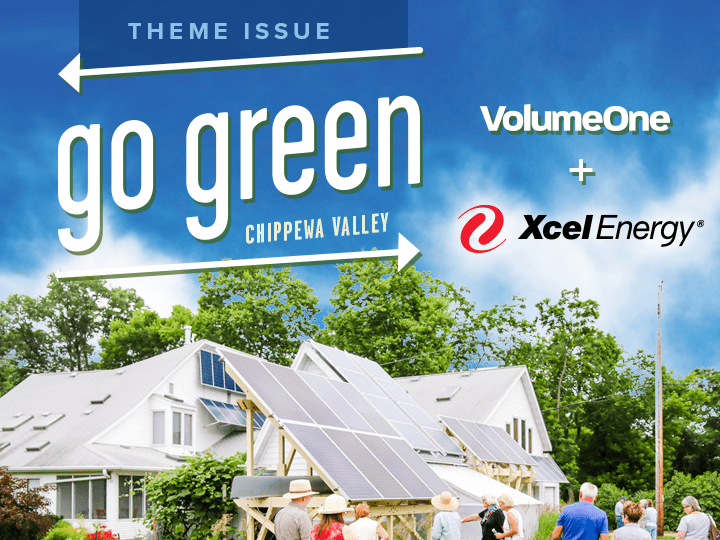Exploring the Solar Scenario
looking at the feasibility of solar power in the Valley with Next Step Energy
James Johonnott, photos by Andrea Paulseth

As solar power becomes far more mainstream, and with a surging interest to remove dependency on fossil fuels, residential and business solar PV (photovoltaic) energy systems are becoming more common. But with conversations about solar come a number of recurring questions: “What about when the sun doesn’t shine?” and “Doesn’t it cost too much to install?” Hoping to get some practical answers to these persistent questions, I sat down with Jared Schroeder and Zeus Stark at Next Step Energy in Eau Claire to learn about solar power systems in the Chippewa Valley.
On/Off-Grid.
While many consumers might dream of solar as a way to “get off the grid,” a truly off-grid system is among the biggest price jumps for your solar PV options. “It’s really not practical for most consumers,” Jared explained, “unless you’re powering a cabin, or something remote.” For urban residents of the Chippewa Valley, installing a streamlined solar PV system that’s still plugged into the grid is a more practical option.
“Xcel’s policies have made solar power locally much more valuable for the homeowner.” –Jared Schroeder, Next Step Energy
Price Decline.
Overall, the price of solar power installation has dropped considerably over the last 10-15 years. Zeus recalled times when solar panels were priced at $8/watt, and are now closer to $2.50/watt. Due to the ever-present issues caused by the supply chain shakeup, prices have plateaued and may be on a momentary rise, but are still far lower than they were 10-15 years ago.
Annual Net Metering.
When asked about how seasonality and sunlight availability in the Chippewa Valley might affect how practical solar power is here, Jared explained a wonky yet important concept called Annual Net Metering used by Xcel Energy and a number of other utilities. Using this pricing system, any excess power your property produces is fed back into the electrical grid, and you receive a credit that goes toward the months where you use more than you draw from the sun. In practice, this means that what you don’t use on sunny days pays for what you do use on cloudy days. “Xcel’s policies have made solar power locally much more valuable for the homeowner,” Jared explained.
Incentives.
According to both Jared and Zeus, local utility and national policies make this a great time to get a solar PV system, but that could soon change. Currently, there is a tax credit valued at 26% of the installation cost on systems installed before the end of 2023, but that’s soon expected to drop to 22%, and may not see an extension beyond the next two years. “There’s really no way to predict where the national policies are headed,” Zeus said.
Payoff.
Depending on your property and type of installation, Jared offered an estimation that in his experience, solar PV systems take 10-15 years to pay back their installation costs in saved energy costs. While that might seem daunting, he also mentioned that in many cases local financing options exist for long-term loans for solar power with monthly payments lower than your former energy costs. Now that solar power is more mainstream, professionally installed systems generally increase the resale value for a property as well.
Keeping it Local.
A solar PV system isn’t inexpensive, so it’s important to be wary of markups and exploitative pricing. Zeus lamented the arrival of a number of out-of-state contractors that are advertising to the area via social media, with roughly 30% price markups.


